195 results found for 'Temperature'. Prev |1|2|3|4|5|6|7|8 | Next | View 100 per page
Low relevance matches: 81 other results may be of interest to you. Show low relevance matches
Describing biodiversity - Ecosystems are diverse, composed of varied habitats and can be described in terms of their component species, species interactions and the abiotic factors that make up the environment ACSBL021 Year 11 Biodiversity and the interconnectedness of life
Describing biodiversity - In addition to biotic factors, abiotic factors including climate and substrate can be used to and classify environments ACSBL029 Year 11 Biodiversity and the interconnectedness of life
Ecosystem dynamics - Models of ecosystem interactions (for example, food webs, successional models) can be used to predict the impact of change and are based on interpretation of and extrapolation from sample data (for example, data derived from ecosystem surveying techniques ACSBL110 Year 12 Maintaining the internal environment
Homeostasis - Homeostasis involves a stimulus response model in which change in external or internal environmental conditions is detected and appropriate responses occur via negative feedback; in vertebrates, receptors and effectors are linked via a control centre by n ACSCH036 Year 11 Chemical fundamentals
Chemical reactions - All chemical reactions involve the creation of new substances and associated energy transformations, commonly observable as changes in the temperature of the surroundings and/or the emission of light ACSCH060 Year 11 Molecular interactions and reactions
Intermolecular forces and gases - The behaviour of gases, including the qualitative relationships between pressure, temperature and volume, can be explained using kinetic theory ACSCH061 Year 11 Molecular interactions and reactions
Aqueous solutions and acidity - Water is a key substance in a range of chemical systems because of its unique properties, including its boiling point, density in solid and liquid phases, surface tension, and ability to act as a solvent ACSCH063 Year 11 Molecular interactions and reactions
Aqueous solutions and acidity - The concentration of a solution is defined as the amount of solute divided by the amount of solution; this can be represented in a variety of ways including by the number of moles of the solute per litre of solution (mol L1) and the mass of the solute pe ACSCH064 Year 11 Molecular interactions and reactions
Aqueous solutions and acidity - The presence of specific ions in solutions can be identified using analytical techniques based on chemical reactions, including precipitation and acidbase reactions ACSCH065 Year 11 Molecular interactions and reactions
Aqueous solutions and acidity - The solubility of substances in water, including ionic and molecular substances, can be explained by the intermolecular forces between species in the substances and water molecules, and is affected by changes in temperature ACSPH020 Year 11 Thermal nuclear and electrical physics
Heating processes - Provided a substance does not change state, its temperature change is proportional to the amount of energy added to or removed from the substance; the constant of proportionality describes the heat capacity of the substance ACSPH022 Year 11 Thermal nuclear and electrical physics
Heating processes - Two systems in contact transfer energy between particles so that eventually the systems reach the same temperature; that is, they are in thermal equilibrium ACSPH021 Year 11 Thermal nuclear and electrical physics
Heating processes - Change of state involves internal energy changes to form or break bonds between atoms or molecules; latent heat is the energy required to be added to or removed from a system to change the state of the system
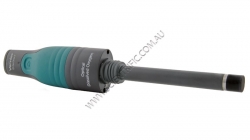
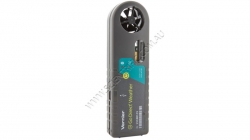
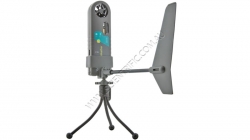
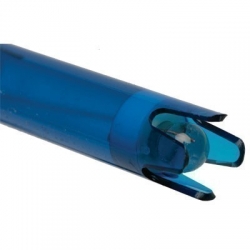
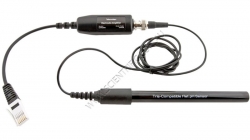
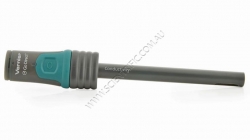
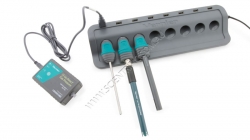

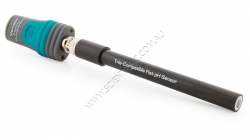
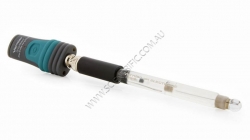
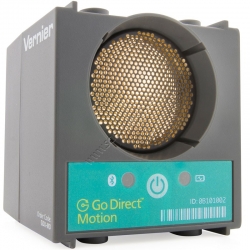
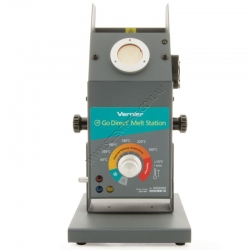
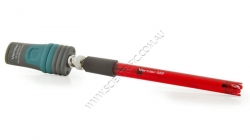
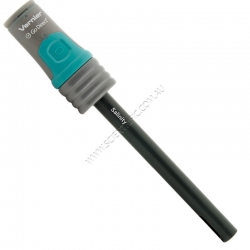
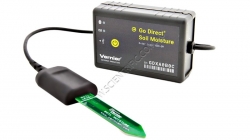
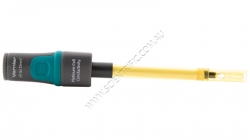
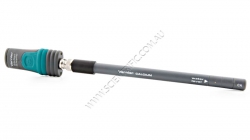

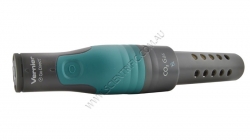
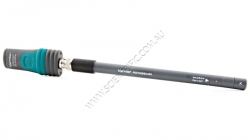
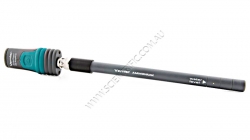
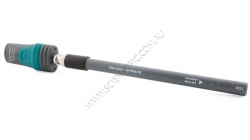
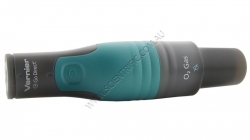
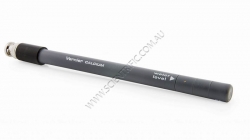
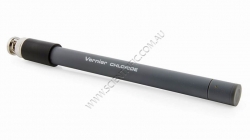
195 results found for 'Temperature'. Prev |1|2|3|4|5|6|7|8 | Next | View 100 per page
Low relevance matches: 81 other results may be of interest to you. Show low relevance matches
Curriculum resources related to 'Temperature'
ACSBL019 Year 11 Biodiversity and the interconnectedness of lifeDescribing biodiversity - Ecosystems are diverse, composed of varied habitats and can be described in terms of their component species, species interactions and the abiotic factors that make up the environment ACSBL021 Year 11 Biodiversity and the interconnectedness of life
Describing biodiversity - In addition to biotic factors, abiotic factors including climate and substrate can be used to and classify environments ACSBL029 Year 11 Biodiversity and the interconnectedness of life
Ecosystem dynamics - Models of ecosystem interactions (for example, food webs, successional models) can be used to predict the impact of change and are based on interpretation of and extrapolation from sample data (for example, data derived from ecosystem surveying techniques ACSBL110 Year 12 Maintaining the internal environment
Homeostasis - Homeostasis involves a stimulus response model in which change in external or internal environmental conditions is detected and appropriate responses occur via negative feedback; in vertebrates, receptors and effectors are linked via a control centre by n ACSCH036 Year 11 Chemical fundamentals
Chemical reactions - All chemical reactions involve the creation of new substances and associated energy transformations, commonly observable as changes in the temperature of the surroundings and/or the emission of light ACSCH060 Year 11 Molecular interactions and reactions
Intermolecular forces and gases - The behaviour of gases, including the qualitative relationships between pressure, temperature and volume, can be explained using kinetic theory ACSCH061 Year 11 Molecular interactions and reactions
Aqueous solutions and acidity - Water is a key substance in a range of chemical systems because of its unique properties, including its boiling point, density in solid and liquid phases, surface tension, and ability to act as a solvent ACSCH063 Year 11 Molecular interactions and reactions
Aqueous solutions and acidity - The concentration of a solution is defined as the amount of solute divided by the amount of solution; this can be represented in a variety of ways including by the number of moles of the solute per litre of solution (mol L1) and the mass of the solute pe ACSCH064 Year 11 Molecular interactions and reactions
Aqueous solutions and acidity - The presence of specific ions in solutions can be identified using analytical techniques based on chemical reactions, including precipitation and acidbase reactions ACSCH065 Year 11 Molecular interactions and reactions
Aqueous solutions and acidity - The solubility of substances in water, including ionic and molecular substances, can be explained by the intermolecular forces between species in the substances and water molecules, and is affected by changes in temperature ACSPH020 Year 11 Thermal nuclear and electrical physics
Heating processes - Provided a substance does not change state, its temperature change is proportional to the amount of energy added to or removed from the substance; the constant of proportionality describes the heat capacity of the substance ACSPH022 Year 11 Thermal nuclear and electrical physics
Heating processes - Two systems in contact transfer energy between particles so that eventually the systems reach the same temperature; that is, they are in thermal equilibrium ACSPH021 Year 11 Thermal nuclear and electrical physics
Heating processes - Change of state involves internal energy changes to form or break bonds between atoms or molecules; latent heat is the energy required to be added to or removed from a system to change the state of the system
Products related to 'Temperature'

Vernier Go Direct Optical Dissolved Oxygen Probe
VERNIER GO DIRECT OPTICAL DISSOLVED OXYGEN PORBE
The Vernier Go Direct Optical Dissolved Oxygen Probe combines the power of multiple sensors to make it easy to measure dissolved oxygen concentration, water temperature and atmospheric pressure. It connects wirelessly via B...
Order code: GDX-ODO



Vernier Go Direct Weather Sensor
VERNIER GO DIRECT WEATHER SENSOR ONLY
Easily monitor a wide variety of environmental factors with just one sensor.
The wireless handheld Vernier Go Direct Weather Sensor measures:
• Wind Speed
• Wind Chill
• Temperature
• Heat Index
• Dew Point
• Relative Humidity
...
Order code: GDX-WTHR

Vernier Go Direct Weather System
VERNIER GO DIRECT WEATHER SYSTEM
Vernier's Go Direct Weather System includes an affordable, wireless handheld sensor used to easily monitor a wide variety of environmental factors and a Vernier Go Direct Weather Vane accessory required to report wind direction.
The Weath...
Order code: GDX-WTVA

Vernier pH Sensor
VERNIER PH SENSOR
Vernier's general purpose pH sensor can be used across disciplines including chemistry, biology, middle school science and environmental science.
Use the pH Sensor just as you would a traditional pH meter with the additional advantages of automated da...
Order code: PH-BTA



Vernier Tris Compatible Flat pH Sensor
VERNIER TRIS COMPATIBLE FLAT PH SENSOR
The Tris-Compatible Flat pH Sensor is highly versatile. Because the glass membrane is flat instead of a bulb, it is more durable, easier to clean and allows for flat surface measurements or smaller sample sizes. It features a sealed,...
Order code: FPH-BTA



Vernier Go Direct Conductivity Probe
VERNIER GO DIRECT CONDUCTIVITY PROBE
Vernier's Go Direct Conductivity Probe determines the ionic content of an aqueous solution by measuring its electrical conductivity. It directly connects wirelessly via Bluetooth® or wired via USB to your platform.
The Vernier Go Di...
Order code: GDX-CON



Vernier Go Direct Charging Station
VERNIER GO DIRECT CHARGING STATION
The Vernier Go Direct™ Charging Station is the perfect solution for charging your Go Direct Sensors. Each charging station has sixteen charging ports - eight USB and eight wand-style sensor ports. LED lights on the Go Direct sensors wil...
Order code: GDX-CRG

Vernier Go Direct Drop Counter
VERNIER GO DIRECT DROP COUNTER
Vernier's Go Direct Drop Counter precisely records the number of drops of titrant added during a titration and then automatically converts it to volume. It directly connects wirelessly via Bluetooth® or wired via USB to your platform.
Con...
Order code: GDX-DC



Vernier Go Direct Tris Compatible Flat pH Sensor
VERNIER GO DIRECT TRIS-COMPATIBLE FLAT pH SENSOR
Vernier's Go Direct Tris-Compatible Flat pH Sensor is a highly versatile sensor. Because the glass membrane is flat instead of a bulb, it is more durable, easier to clean and allows for flat surface measurements or smaller ...
Order code: GDX-FPH



Vernier Go Direct Glass-Body pH Sensor
VERNIER GO DIRECT GLASS BODY pH SENSOR
This high-quality glass body pH sensor can be used in non-aqueous solutions and solutions that contain organic solvents, strong acids or strong bases. The electrode features a sealed, gel-filled Ag-AgCl combination reference electrod...
Order code: GDX-GPH



Vernier Go Direct Motion Detector
VERNIER GO DIRECT MOTION DETECTOR
Vernier's Go Direct Motion Detector uses ultrasound to measure the position, velocity and acceleration of moving objects. It directly connects wirelessly via Bluetooth® or wired via USB to your platform.
Accurately track objects as clo...
Order code: GDX-MD



Vernier Go Direct Melt Station
VERNIER GO DIRECT MELT STATION
Vernier's Go Direct Melt Station accurately determines the melting temperature of solid substances. It directly connects wirelessly via Bluetooth® or wired via USB to your platform.
Teach students the visual detection capillary method of ...
Order code: GDX-MLT



Vernier Go Direct ORP Sensor
VERNIER GO DIRECT ORP SENSOR
Vernier's Go Direct ORP (Oxidation-Reduction Potential) Sensor measures the ability of a solution to act as an oxidizing or reducing agent. It directly connects wirelessly via Bluetooth® or wired via USB to your platform.
Use the Vernier Go...
Order code: GDX-ORP



Vernier Go Direct Salinity Sensor
VERNIER GO DIRECT SALINITY SENSOR
Vernier's Go Direct Salinity Sensor easily and precisely measures the total dissolved salt content in an aqueous solution. You have the ability to measure temperature-compensated salinity or non-temperature-compensated salinity, along wit...
Order code: GDX-SAL

Vernier Go Direct Soil Moisture Sensor
Available during Term 4 2024
VERNIER GO DIRECT SOIL MOISTURE SENSOR
Vernier's Go Direct Soil Moisture Sensor uses capacitance to measure the water content of soil by measuring the dielectric permittivity of the soil, which is a function of the water content.
Simply insert this rugged sensor into ...
Order code: GDX-SM

Vernier Go Direct Platinum-Cell Conductivity Probe
VERNIER GO DIRECT PLATINUM-CELL CONDUCTIVITY PROBE
Perfect for senior secondary and university general chemistry, Vernier's Go Direct Platinum-Cell Conductivity Probe provides an accurate and easy measurement of a solution’s conductivity or its total ion concentration. Th...
Order code: GDX-CONPT

Vernier Go Direct Calcium Ion-Selective Electrode
VERNIER GO DIRECT CALCIUM ION-SELECTIVE ELECTRODE
Vernier's Go Direct Calcium Ion-Selective Electrode (ISE) can be used to measure the concentration of calcium (Ca2+) in aqueous samples. It connects via Bluetooth® wireless technology or wired via USB to your device.
Da...
Order code: GDX-CA



Vernier Go Direct Chloride Ion-Selective Electrode
VERNIER GO DIRECT CHLORIDE ION-SELECTIVE ELECTRODE
Vernier's Go Direct Chloride Ion-Selective Electrode (ISE) is used to measure the concentration of chloride (Cl-) in aqueous samples. It connects via Bluetooth® wireless technology or wired via USB to your device.
The ...
Order code: GDX-CL



Vernier Go Direct CO2 Gas Sensor
VERNIER GO DIRECT CO2 SENSOR
The Vernier Go Direct CO2 Gas Sensor measures gaseous carbon dioxide concentration levels, air temperature and relative humidity. It can be used in a variety of biology experiments. It connects wirelessly via Bluetooth® wireless technology or ...
Order code: GDX-CO2



Vernier Go Direct Potassium Ion-Selective Electrode
VERNIER GO DIRECT POTASSIUM ION-SELECTIVE ELECTRODE
Vernier's Go Direct Potassium Ion-Selective Electrode (ISE) can be used to measure the concentration of potassium (K+) ions in aqueous solutions. It connects via Bluetooth® wireless technology or wired via USB to your de...
Order code: GDX-K



Vernier Go Direct Ammonium Ion-Selective Electrode
VERNIER GO DIRECT AMMONIUM ION-SELECTIVE ELECTRODE
Vernier's Go Direct Ammonium Ion-Selective Electrode (ISE) can be used to measure the concentration of ammonium (NH4+) in aqueous samples. It connects via Bluetooth® wireless technology or wired via USB to your device.
...
Order code: GDX-NH4



Vernier Go Direct Nitrate Ion-Selective Electrode
VERNIER GO DIRECT NITRATE ION-SELECTIVE ELECTRODE
The Vernier Go Direct Nitrate Ion-Selective Electrode (ISE) can be used to measure the concentration of nitrate (NO3-) in aqueous samples. It connects via Bluetooth® wireless technology or wired via USB to your device.
...
Order code: GDX-NO3



Vernier Go Direct O2 Gas Sensor
VERNIER GO DIRECT O2 GAS SENSOR
The Vernier Go Direct O2 Gas Sensor measures gaseous oxygen concentration levels and air temperature. It is useful for a variety of biology and physiology experiments. It connects wirelessly via Bluetooth® wireless technology or wired via U...
Order code: GDX-O2



Vernier Go Direct Calcium Ion-Selective Electrode BNC
VERNIER GO DIRECT CALCIUM ION-SELECTIVE ELECTRODE BNC
This is a replacement electrode for GDX-CA Vernier Go Direct™ Calcium Ion-Selective Electrode
Connect the Vernier Go Direct™ Calcium Ion-Selective Electrode BNC ...
Order code: GDX-CA-BNC



Vernier Go Direct Chloride Ion-Selective Electrode BNC
VERNIER GO DIRECT CHLORIDE ION-SELECTIVE ELECTRODE BNC
This is a replacement electrode for GDX-CL Vernier Go Direct™ Chloride Ion-Selective Electrode
Connect the Vernier Go Direct™ Chloride Ion-Selective Electrode B...
Order code: GDX-CL-BNC


195 results found for 'Temperature'. Prev |1|2|3|4|5|6|7|8 | Next | View 100 per page


